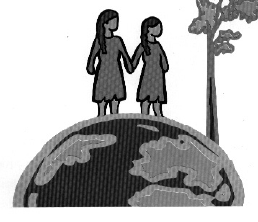|
The
"Garden City" of the country -Bangalore, has the distinction
of being the fastest growing city in Asia with a rapidly increasing
population, now estimated to be over six million (4.5 million, 1990
census). However, such a growth has had a negative impact on the
environmental quality of the city and the already strained
infrastructure facilities. Increasing growth of industries along with
unplanned housing, slums, inadequate water supply and sewerage,
pollution of air and water, huge quantities of solid wastes, degradation
of its numerous lakes and noise pollution are some of the major concerns
facing the city today.
With a view to create awareness on the problems facing the city and with
a hope to catalyse remedial actions, the CLEAN-India movement was
launched in Bangalore in July 1999. With limited resources at hand,
three schools initiated the programme in the city, namely Bishop Cotton’s
Girls High School, Centre for Learning and Sri Vani High School.
An orientation workshop was held to train teachers and students on the
needs and means of monitoring the environment quality. As a part of the
programme, the students learnt to monitor the water and air quality,
using the field kits-Jal-TARA and Pawan-TARA. A field trip to the highly
polluted Ulsoor Lake in the eastern part of the city provided an
opportunity for the children to have a practical experience in using the
Jal-TARA kit. It also helped them observe the problems associated with
the lake’s environment and its extent of pollution.
The city of Bangalore has been delineated into ten zones to facilitate
environment monitoring. At this stage, three schools have collected
water samples from various sites in three different zones and monitored
the water quality during the monsoon, winter and summer seasons using
the Jal-TARA kit.
There has been great enthusiasm,both among children and teachers, to
monitor water samples from different parts of the city. Although the
results do not indicate very high pollution levels in drinking water, we
have several more zones to cover and therefore more samples to analyse.
The surface waters (lakes) have indicated high pollution levels. The
number of lakes in the city have dwindled from about 250 in the 1960s to
around 80 at present due to dumping of raw sewage, solid waste,
industrial effluents, siltation and encroachment.
School-level environment education activities with the emphasis on
plastic carry bag management and water conservation have also been
conducted and a demonstrative vermicomposting unit has been initiated in
two schools.
The reach of CLEAN - Bangalore will increase this year so that the
programme will have a greater impact when many more schools join the
network. Four more schools are likely to join the programme in June
2000, namely Poorna Learning Centre and Clarence High School.
The ultimate aim of the programme is that assessment and awareness must
lead to actions to improve the environment. The implementation of action
programmes, which include solid waste management, rainwater harvesting,
paper recycling, tree planting, etc., will be initiated in this academic
year.
A spatial representation of the water and air quality with the help of
the data collected will indicate the pollution levels in various parts
of the city. The inclusion of Resident Welfare Associations in the
programme will ensure effectiveness in implementing the action
programmes in the community. We hope that for the children, action can
become a powerful way of learning about the environment and induce a
realisation that their actions can make a difference. q
|
|
I
Can Save the Earth

I woke up in the
morning,
I thought it would be a new beginning.
But when I did peep out of my window,
Shattered was the dream of a better tomorrow.
The sun had an eerie glow,
Draped was the horizon in a smoky robe.
The birds seemed to fly slowly,
The environment was polluted completely.
Withered were the roses and daisies.
Few were the lush, green trees.
The stream was turbid, eroded was the land.
Sounds most disturbing rang like a diabolic
band.
Who was it that caused this disaster,
In this heaven like place of the Master,
Which now bared a sad face,
Humans, I realised, are the destructive race.
But I too am a human being.
I am to be blamed too for the animals dying.
I resolved that everyone must,
Do his bit to save the earth’s crust.
Stop the use of polyethylene,
Recycle paper to save the tree.
Check the pollution and the noise.
So Mother Earth can sit in poise.
If you ask me, what difference can I make,
I would say it is for Nature’s sake,
That each one must contribute to the fullest.
For the earth can change with the help of the meekest.
Turpti, B. Indulkar
Bishop Cotton’s Girls High Schools
Bangalore
|
|
